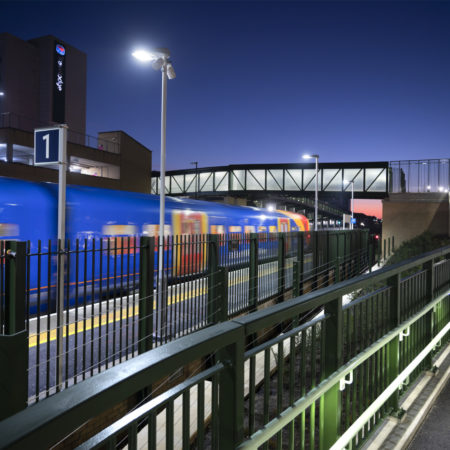How Collaboration Creates Value
Collaboration is clearly written into the future of transport infrastructure. The belief is that collaboration will deliver transport networks that are more resilient, cheaper to maintain and that work better for the travelling public. It will also deliver more and better project outcomes from finite resources.
Do theory and practice have anything more than a nodding acquaintance? Does greater value flow from collaboration? A couple of recent projects show clearly how working with organisations that have complementary expertise creates value.
Access for All (AfA) station upgrades usually involve detailed survey work. Accurate 3D models of existing stations allow the design of new ramps, lifts and bridges to be integrated into existing structures in the most efficient way. Attention to detail means that work can be planned with greater accuracy with much less risk of delays or overruns.
Digital Mapping – Less Time, More Detail
Carrying out surveys in the traditional way is highly time-consuming. And track access can take weeks or months to negotiate. When Osborne was called on to plan and execute AfA upgrades to four London stations we turned to Sensat and their Unmanned Aerial Vehicle (UAV) technology.
Osborne had previously worked with Sensat to map the M25 and a major highways upgrade on the A46. Not only could they complete 3D mapping of the stations quickly and without line closures, they also have the rare permission to fly in the London airspace.
In just 48 hours, detailed 3D digital maps of the four stations were complete. This was at least four times quicker than a traditional survey and encompassed an area 70 times larger. The cost was £7k compared to £20k and a further £10k of possession management costs were also eliminated. Most importantly, designs were based on accurate 3-D models of the stations and their surroundings to leave nothing to chance.
Integrated Planning
Another example shows how integrating Electrification and Plant (E&P) and building and civils works into a single framework delivers efficiencies and cost savings. The framework allows major upgrades to feeder lines, switchgear and transformers to be integrated with other planned maintenance and upgrade works.
Within the Wessex region this approach has helped to coordinate site investigations, surveys and design development and interfaces. This in turn allows possessions to be better planned to deliver greater flexibility and efficiency with less overall disruption.
Collaborative working is part of the Osborne culture. We continue to see the benefits of this commitment through numerous infrastructure projects and frameworks.

